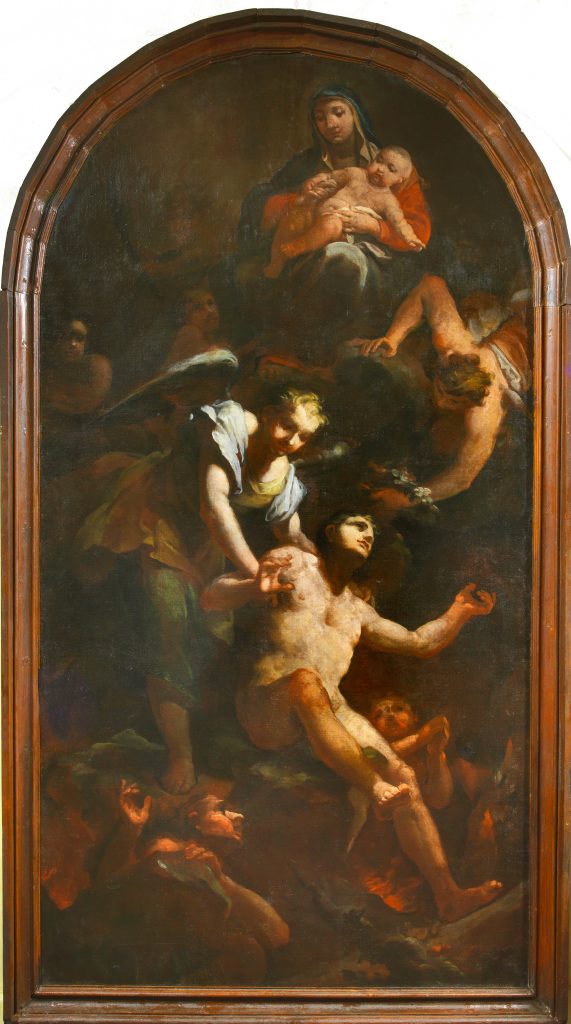GIOVANNI CAMILLO SAGRESTANI
Florence, 1660-1731
Madonna with Child and the souls in purgatory
dated: 1700 ca.
oil on canvas, cm 286×159
This large altarpiece is a recent and remarkable discovery that expands the catalogue of Giovanni Camillo Sagrestani, one of the most important Florentine painters of his generation. The work, from a private Florentine collection, depicts the Madonna and Child in Glory above an angel saving a man from the flames. This represents an example of the iconography, widespread during the Baroque period, of souls in Purgatory.
The recent in-depth restoration has re-established the readability of the work, previously compromised by oxidation, dirt and darkening glazes that prevented a careful stylistic and critical analysis.
A painting style based on quick mark making (the so called “pittura di tocco”), the construction of the forms and the clear reference to the Venetian production of Luca Giordano are all characteristics that identify the author as the Florentine Giovanni Camillo Sagrestani.
Sagrestani was probably a pupil of Simone Pignoni, for whom he posed when he was a young boy as a model for an angel of Pala Donati all’Annunziata. He travelled extensively between Rome, Venice, Parma and Bologna, where he was able to study late Baroque painting. In Emilia he came into contact with Cignani, who influenced his most interesting compositions. However, the most important example for the painter are Luca Giordano’s “pittura di tocco” and quick painting style. Upon his return to Florence Sagrestani worked against the local drawing tradition and became successfull thanks to his thick brushstrokes, full of luministic touches. The canvas presented here is paradigmatic of this phase and is located in the painter’s catalogue around the turn of the century, representing one of his most typical works.


